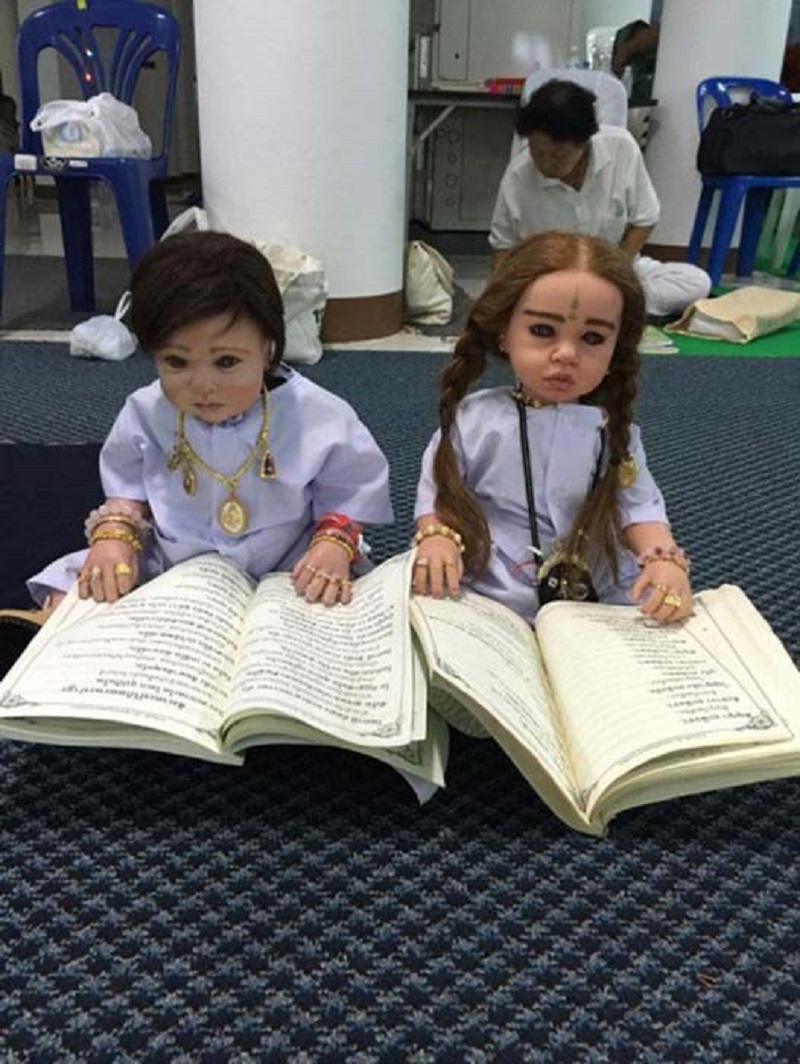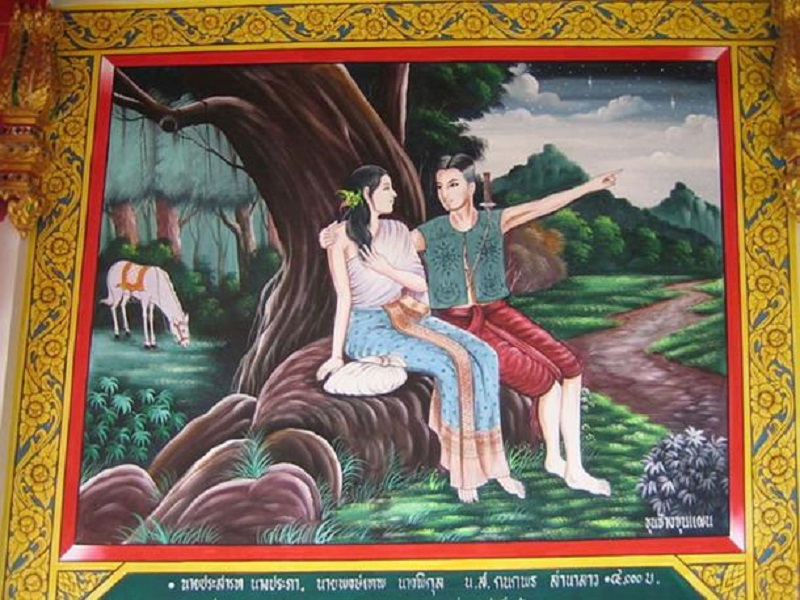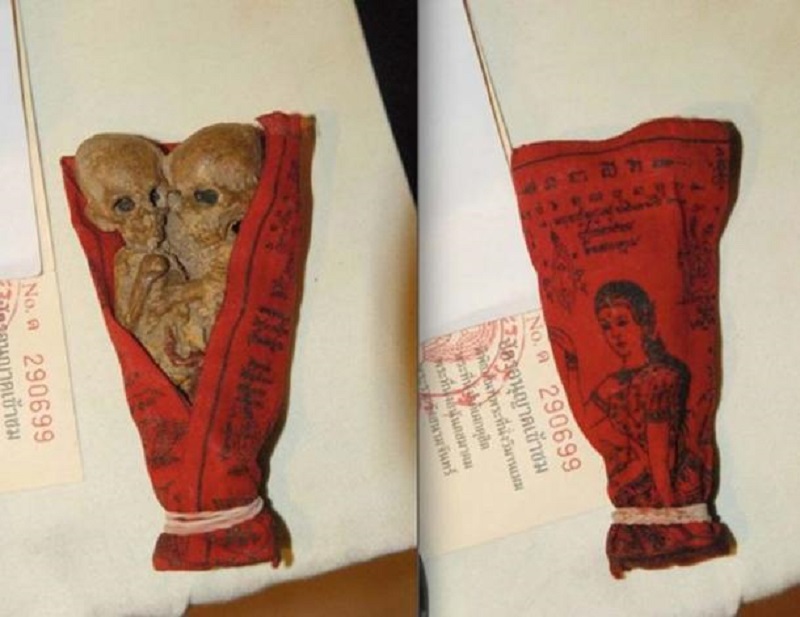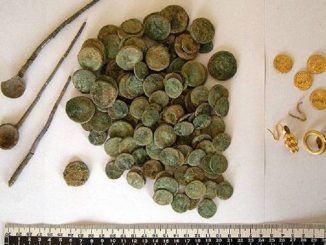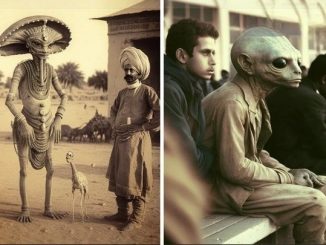Recently, reports of the Thai doll craze have been featured at the end of the news hour, a spot usually reserved for pop culture tidbits like hijab wearing Barbies (“hijarbies”) or birthday of the oldest man/woman alive. However strange it is to think of people buying extra airplane seats for their dolls, this fad is just the latest iteration of a centuries-old tradition, one with a terrible past.
Luk thp doll
The dolls today are called ‘ luk thep ‘, which roughly translates to ‘little angels’. These realistic-looking toys are believed by some to have supernatural powers. They are usually blessed in a ceremony performed by a Buddhist monk – the same ceremony held to bless amulets (also very popular in Thailand).
Khun Phaen’s amulet. (Public domain)
It is believed that the doll contains a wandering spirit, who is invited to take up residence and imbue the doll with a soul. If treated well, lukp is said to bring good luck to its owner. But if ignored or mistreated, luk thep will act like a naughty child and play tricks. Most importantly, the little angel is tasked with protecting his newly formed family from any evil spirits that may be lurking.
Two luk thep dolls. Photo: Facebook/Nongningbowie. ( Oddity Central/CC BY NC ND 3.0 )
Children’s protector
Superstition and fear of ghosts are very common in Thailand. Before luk thep appeared, Thai people looked to Kuman Thong for protection. The concept of the protector of children dates back centuries to the legend of Khun Chang Khun Phaen, the story of a soldier who lived in the Ayutthaya era.
In the story, Khun Phaen, a high-ranking soldier, marries the daughter of a powerful sorcerer. Not long into their marriage, Khun Phaen and the sorcerer had a big argument. Angry, the sorcerer forced his daughter to poison Khun Phaen. But instead she couldn’t get over it and died. Khun Phaen was so angry that he tore the stillborn fetus from his wife’s belly and threw it into the temple fire. At the end of the ceremony, the child becomes a ghost who can talk to Khun Phaen and act as a guardian spirit.
Khun Phaen and Wanthong fled into the forest. Mural in the sala on Khao Phra, U Thong, Suphanburi, Thailand. (Public domain)
Thai necromancy
This story has elements of Thai necromancy, a type of black magic practiced by sorcerers. The ritual of creating the guardian spirit Kuman Thong involves preparing and chanting sutras for the dead fetus while it is still in the mother’s womb. According to ancient manuscripts, the baby’s body would be taken to a cemetery, where a fire would be set. Before sunrise, the fetus is placed on a fire and roasted until dry, while the witch chants a spell to summon Kuman Thong.
Once the dry roasting process is complete, the fetus is painted with a special lacquer called Ya Lak and then covered with gold leaf. This is the origin of the name Kuman Thong, which means ‘Golden Boy’. Ideally, the effigy will also be soaked in Nam Man Phrai, a powerful oil in Thai mystical traditions. This is an oil derived by placing a candle under the chin of a woman who died while pregnant or who died in an unusual or violent manner.
A Kuman Thong replica sold as a souvenir at a Buddhist temple in Ayutthaya, Thailand, wrapped in a cloth with an image of Nang Kwak. ( Greg Field/CC BY SA 3.0 )
Nam Man Phrai and Kuman Thongs made from dead babies are now illegal. However, every now and then a story emerges of dead fetuses being discovered by airport security staff or smuggled from abortion clinics to be blessed at temples.
Kuman Thong and today’s little angels
Today, many Kuman Thongs are not made from real human fetuses. Instead, they are small dolls or statues of a smiling boy wearing traditional Ayutthaya clothing with his hair tied in a bun. He also often carries a small bag of gold to bring wealth to his new family.
These Kuman Thong dolls, as well as related hyper-realistic luk thep dolls, need to be provided with food and drink daily. Like most children, they are said to love sweets like cookies and candy. As for drinks, the dolls, like many other figures worshiped in Thailand, crave almost exclusively Nam-daeng, which means ‘red water’. This dish is made using bright red artificial food coloring and flavored with local sala fruit. If traditional Nam-daeng is not possible then red Fanta is the next best thing.
Some believe that idols’ preference for red drinks stems from the ancient tradition of offering animal blood to the soul. Kuman Thong and luk thep dolls also need to be regularly shown affection and given toys, just like a real child. Otherwise, they would have terrorized their abandoned family.
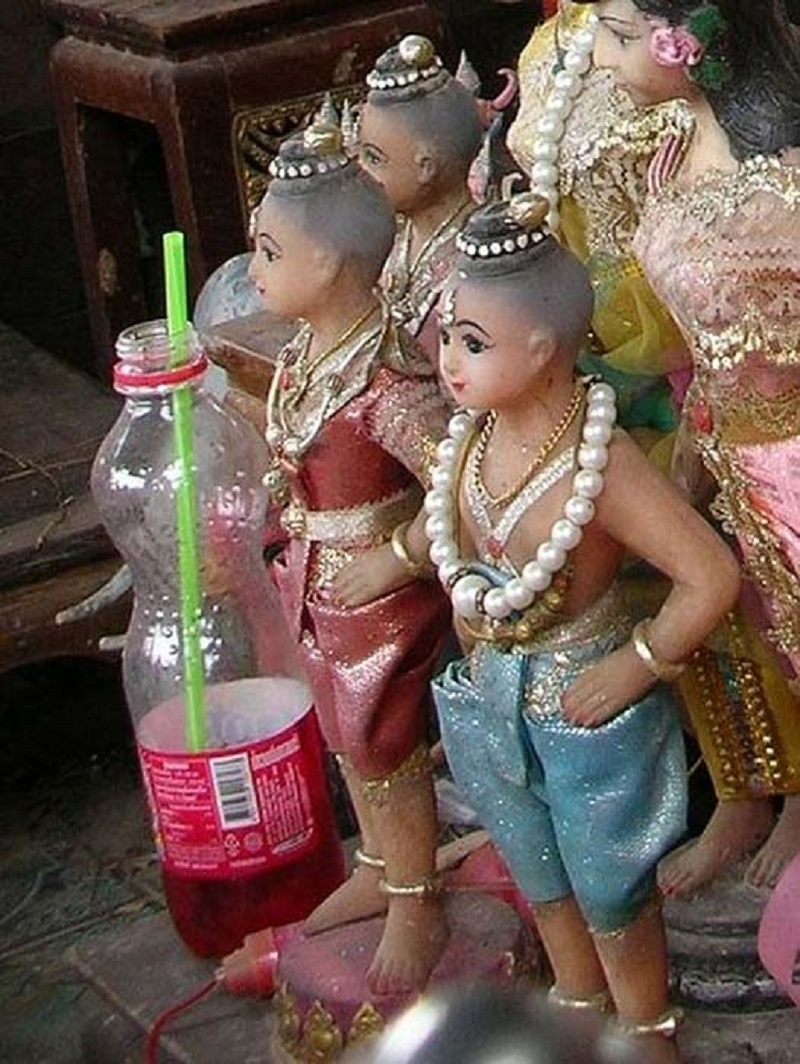
Statue of Kuman Thong at a temple in Ratchaburi province. ( Xufanc/CC BY SA 4.0 )

